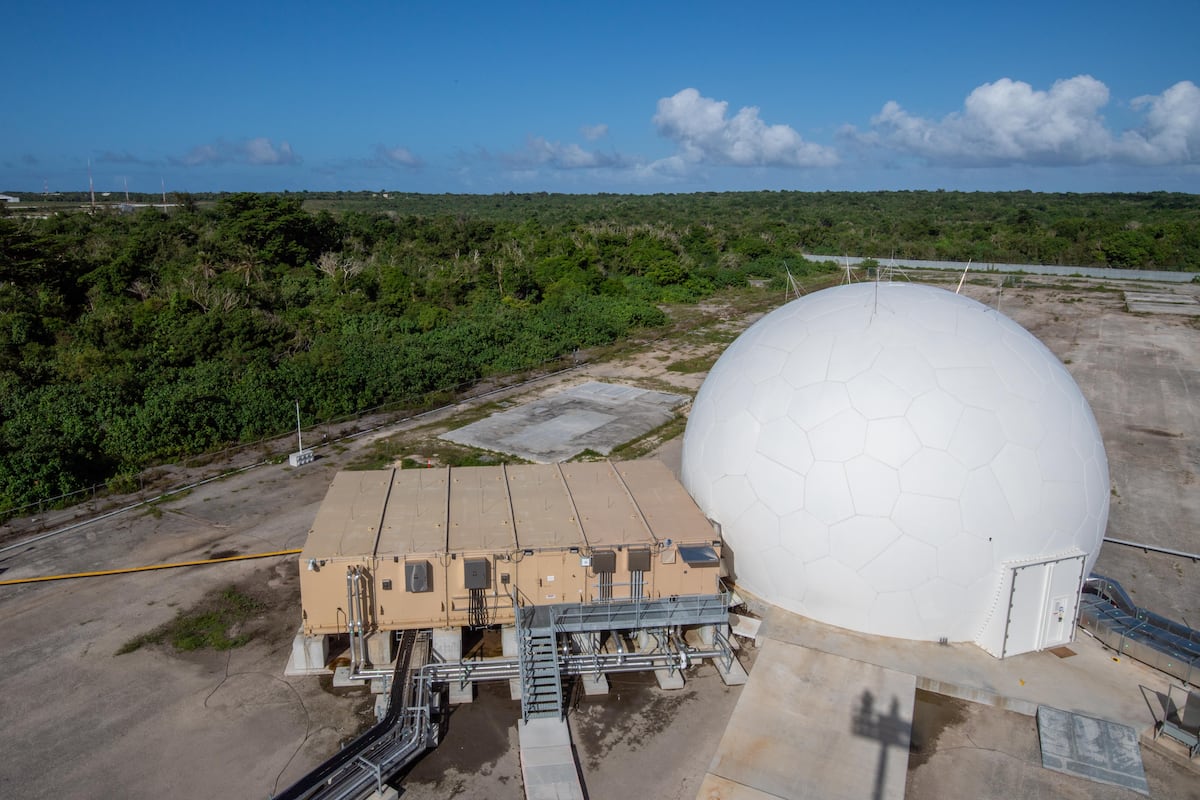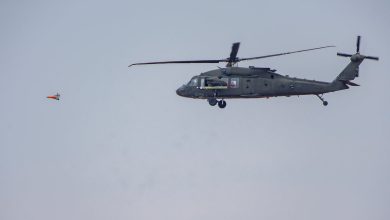The Missile Defense Agency intercepted an incoming ballistic missile threat target in a test from Guam, according to a Tuesday agency announcement.
The test is the “first ballistic missile defense event executed from Guam,” the statement notes.
As the Pentagon works to build an integrated air and missile defense architecture on Guam, this is the first test of a portion of the future capability designed to protect the key strategic island from emerging and evolving threats.
“Within the context of homeland defense, a top priority for the Department of Defense, Guam is also a strategic location for sustaining and maintaining United States military presence, deterring adversaries, responding to crises, and maintaining a free and open Indo-Pacific region,” the statement says.
In the test, an Aegis Guam System with an AN/TPY-6 radar and Vertical Launching System fired a Standard Missile-3 Block IIA interceptor, which then took out an air-launched Medium Range Ballistic Missile target flying off the coast of Andersen Air Force Base, according to the statement.
The AN/TPY-6 radar, a new MDA system designed specifically for the Guam architecture and delivered there earlier this year, tracked the target from shortly after launch to the intercept, the statement says.
The new radar uses technology from MDA’s Long-Range Discrimination Radar positioned in Alaska at Clear Space Force Station, which will have its own test next year ahead of declaring operational capability.
“This is a tremendous group effort and provides a glimpse of how organizations within the Department of Defense have come together to defend our homeland Guam now and in the future,” Lt. Gen. Heath Collins, MDA director, said in the statement. “Collectively, we will use this to build upon and validate joint tracking architecture and integrated air and missile defense capabilities for Guam.”
The test data will feed into continued concept development, requirements validation and modeling for the future Guam Defense System, or GDS, the statement adds.
GDS will be built using a variety of components from the services. The U.S. Army was assigned in 2023 to lead the acquisition and execution plan for the Guam architecture, and the service’s Rapid Capabilities and Critical Technologies Office lead – a three-star general – was appointed to stand up a joint team for seeing it through.
MDA’s role now is focused primarily on developing the means to tie all the systems together that will be part of the GDS architecture.
The agency is establishing a combined command center on the island that will host all of the “major command and control systems in the missile defense business,” Collins said in an interview with Defense News this summer. Component include the Army’s Integrated Battle Command System, the Navy’s Aegis weapon system and the Aegis ground system being built for Guam, the Air Force’s C2 system and the agency’s Command Control Battle Management and Communications system, known as C2BMC.
The architecture also relies on a variety of systems still in development, mostly within the Army. The Navy will provide technology and capability from its Aegis weapon system. The land service plans to bring currently fielded capability like the Patriot system and its IBCS that connects any sensor and shooter together on the battlefield, as well as Mid-Range Capability missile launchers, which were first fielded at the end of last year.
The Army will also incorporate Patriot’s radar replacement, the Lower Tier Air and Missile Defense Sensor, and its Indirect Fire Protection Capability launchers currently in prototype testing and evaluation.
While the test represents a step forward, over the next year or so, the island “will look like it pretty much looks today,” Collins told Defense News. “Our first construction money to start building on the island is ‘25 so we will, by the end of ‘25, we will have begun some military construction on some of the sites.”
Jen Judson is an award-winning journalist covering land warfare for Defense News. She has also worked for Politico and Inside Defense. She holds a Master of Science degree in journalism from Boston University and a Bachelor of Arts degree from Kenyon College.
Read the full article here





